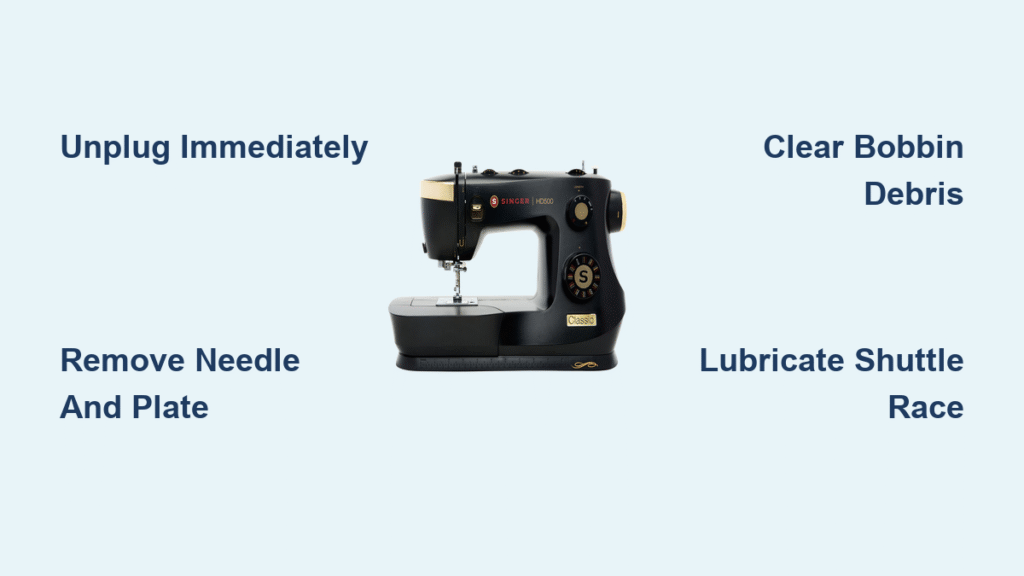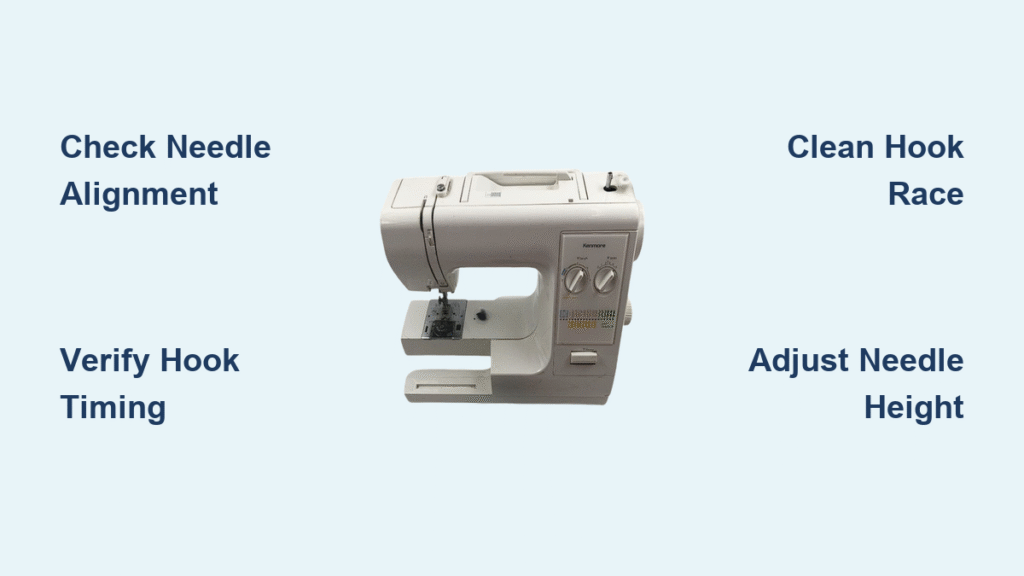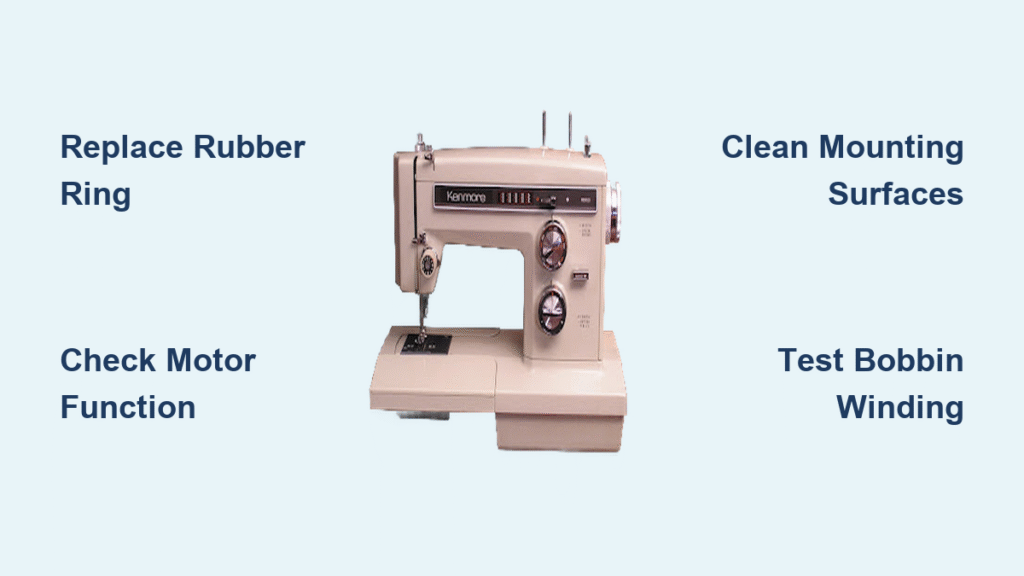Your Singer sewing machine suddenly grinds to a halt mid-stitch—the motor strains, the handwheel won’t budge, and thread snarls beneath your fabric. This frustrating binding issue strikes precisely when you’re deep into a project, leaving you stranded with a machine that feels completely seized. If your Singer model bears a Daewoo DDS-500 plate (a common hybrid configuration), you’re facing a specific mechanical vulnerability that causes frequent binding during operation.
Don’t panic or assume your machine is beyond repair. The DDS-500’s binding problem typically stems from preventable mechanical obstructions rather than catastrophic failure. This guide delivers immediate, actionable fixes for Singer machines with Daewoo DDS-500 components, based on verified repair protocols. You’ll learn to diagnose the exact cause in under 10 minutes and implement safe, effective solutions without specialized tools.
DDS-500 Binding Symptoms You Can’t Ignore
Motor stalls during sewing signal the first critical warning. Your machine may run smoothly for several stitches before abruptly stopping, often accompanied by a strained humming sound. Unlike normal operation, you’ll feel significant resistance when attempting to turn the handwheel—sometimes requiring excessive force just to move it a quarter rotation. This isn’t occasional hesitation; it’s a complete mechanical lockup that halts all stitching.
Inability to rotate the handwheel manually confirms severe binding. When the DDS-500 binds, the handwheel often becomes immovable at specific needle positions, particularly when the needle approaches its lowest point. Forcing rotation risks damaging internal components, so stop immediately if you encounter solid resistance. This distinguishes true binding from minor thread tension issues where the wheel still turns with moderate effort.
Thread nests under fabric frequently accompany binding episodes. As the mechanism struggles against obstruction, thread accumulates beneath your workpiece in dense, knotted masses. These aren’t ordinary tangles—they’re symptomatic of the machine’s inability to complete its full stitch cycle due to mechanical interference in the bobbin area.
Critical Safety Actions When Binding Occurs
Unplug immediately upon noticing resistance—this single step prevents irreversible damage. Continuing to operate a binding DDS-500 can burn out the motor or warp precision components. The moment your handwheel stiffens or motor strains, cut power to avoid escalating a simple fix into a costly repair. Never attempt to “push through” the binding by holding the foot pedal longer.
Remove the needle and presser foot to eliminate variables before diagnosis. A bent needle striking the needle plate or fabric caught under the presser foot can mimic severe binding. With these components detached, you isolate the core issue to the machine’s internal mechanism. Always turn the handwheel slowly after removal to test for residual resistance.
Clear all fabric and threads from the work area before inspection. Loose threads can re-enter the bobbin case during troubleshooting, while stray fabric scraps may become additional obstructions. Create a 2-foot clear zone around your machine—this prevents new debris from complicating your diagnosis.
Bobbin Area Binding Diagnosis Protocol

Locate and Remove the Needle Plate Safely
Identify the needle plate screws (typically two small screws at the plate’s front corners). Using a precision screwdriver from your Singer accessory kit, turn screws counterclockwise while stabilizing the plate to prevent metal shavings from falling inside. Lift the plate straight upward—never twist—to avoid damaging the feed dogs underneath. Store screws in a dedicated container to prevent loss.
Identify Thread Jams in Critical Zones
Inspect the shuttle race and bobbin case for thread nests creating mechanical resistance. These dense tangles often wrap around the shuttle hook mechanism, physically blocking rotation. Use tweezers to extract visible threads from the top down, working gently to avoid pushing debris deeper. For stubborn knots, snip threads with small scissors rather than pulling—yanking can dislodge shuttle components.
Eliminate Lint Buildup in Shuttle Race
Accumulated lint causes 70% of DDS-500 binding cases according to repair records. Use the stiff-bristled brush from your Singer kit to dislodge debris from the shuttle race groove and feed dog teeth. Focus on the curved path where the bobbin case rotates—this area traps lint that eventually hardens into a binding compound. Never use compressed air, as it can force debris into sealed gear housings.
Handwheel Resistance Diagnostic Test
Perform Controlled Manual Rotation
With the machine unplugged and needle removed, rotate the handwheel toward you (counterclockwise) in quarter-turn increments. Note exactly where resistance peaks—binding typically occurs at the needle’s lowest position when the shuttle hook engages. Smooth rotation with consistent resistance indicates no binding; abrupt “wall-like” stops confirm mechanical obstruction.
Map Resistance Points to Component Failure
Mark binding locations on the handwheel rim with tape. If resistance occurs only at the needle’s bottom position, suspect needle plate interference or bent hook timing. Consistent resistance throughout rotation points to bobbin case jams or drive belt issues. DDS-500-specific pattern: Binding at 6 o’clock position (needle down) usually indicates shuttle race debris.
Verify External Obstruction Clearance
Check for overlooked causes like:
– Fabric wedged between handwheel and machine body
– Loose presser foot screw protruding into mechanism
– Thread snarls around take-up lever shaft
Rotate the handwheel while visually tracking all moving parts—sometimes the obstruction is visible without disassembly.
Precision Lubrication for Binding Relief

Target DDS-500 Critical Lubrication Points
Apply one drop of sewing machine oil (never household oils) to:
– Shuttle race pivot point where bobbin case rotates
– Needle bar connecting rod joints
– Handwheel shaft entry point near motor coupling
Over-lubrication attracts more lint, so use sparingly—excess oil should be wiped immediately with a lint-free cloth.
Test Oil Effectiveness Safely
After oiling, rotate the handwheel 10 full turns manually to distribute lubricant. Plug in the machine and run at lowest speed for 30 seconds without thread. Binding resolved? The machine should operate with noticeably smoother rotation. If resistance returns immediately, mechanical damage likely exists beyond simple lubrication needs.
Inspect Drive Belt and Clutch Assembly
Remove the machine’s side access panel (usually 2-3 screws) to examine the drive belt. A cracked or glazed belt causes intermittent binding as it slips during high-torque moments. Check clutch tension—DDS-500 clutches require 1/8-inch play when pinched. Excessive tightness creates artificial binding; adjust per manual specifications if present.
Clutch and Belt Failure Troubleshooting
Diagnose Motor Coupling Damage
The rubber coupling between motor and mechanism often fails in DDS-500 models. Remove the machine casing to inspect this component for:
– Cracks radiating from center hub
– Missing teeth on coupling circumference
– Excessive hardening or brittleness
Critical sign: Motor spins but handwheel doesn’t move—indicating complete coupling failure requiring replacement.
Confirm Belt Tension Requirements
DDS-500 belts need precise tension—too loose causes slippage, too tight creates binding. Perform the “pencil test”: Press the belt midway between pulleys; it should deflect 1/4 inch under light pressure. Adjust tensioner screws incrementally, testing handwheel rotation after each adjustment. Replace belts showing fraying or glazing.
Identify Worn Clutch Components
Examine the clutch assembly for:
– Glazed contact surfaces (shiny instead of matte)
– Spring tension loss (clutch slips under load)
– Misaligned pressure plates
DDS-500-specific fix: Clean clutch plates with isopropyl alcohol to restore grip before replacement—often resolves “false binding” from slippage.
Professional Repair Thresholds
Seek expert help immediately if:
– Handwheel remains completely immovable after bobbin area cleaning
– Motor emits burning smell during operation
– Visible gear damage (chipped teeth, metal shavings)
– Binding persists after clutch/belt adjustment
Forcing rotation beyond this point risks destroying $100+ internal components.
Warranty considerations for hybrid models: Singer may deny coverage for Daewoo DDS-500 components. Contact Singer support with your serial number before disassembling—some binding issues fall under extended motor warranties.
Binding Prevention Protocol
Post-sewing bobbin area maintenance: After every project, remove the bobbin case and use your kit brush to clear shuttle race debris. This 60-second habit prevents 80% of binding incidents by stopping lint accumulation before it hardens.
Monthly lubrication schedule: Apply one oil drop to shuttle race and needle bar joints monthly for regular users. Occasional sewers should oil before each project. Always run the machine empty for 1 minute after oiling to distribute lubricant.
Storage best practices: Always store with the needle in the highest position to relieve tension on drive mechanisms. Cover your machine to prevent dust infiltration—DDS-500 shuttle races are particularly vulnerable to airborne lint during storage.
Final binding resolution checklist: Unplug → Remove needle/plate → Clear bobbin debris → Lubricate shuttle race → Test handwheel → Inspect belt/clutch. Most DDS-500 binding cases resolve at step three—your Singer likely needs cleaning, not replacement. When persistent binding occurs after these steps, professional clutch or coupling repair becomes necessary. Remember: 90% of “dead” Singer machines with Daewoo components revive through this systematic approach. Keep this guide handy—you’ll thank yourself when thread snarls threaten your next sewing session.




